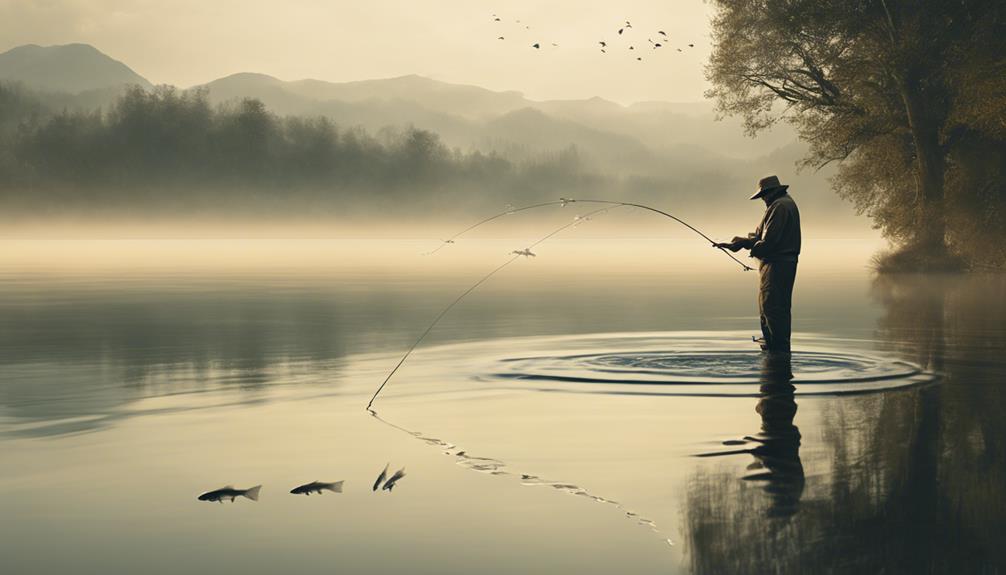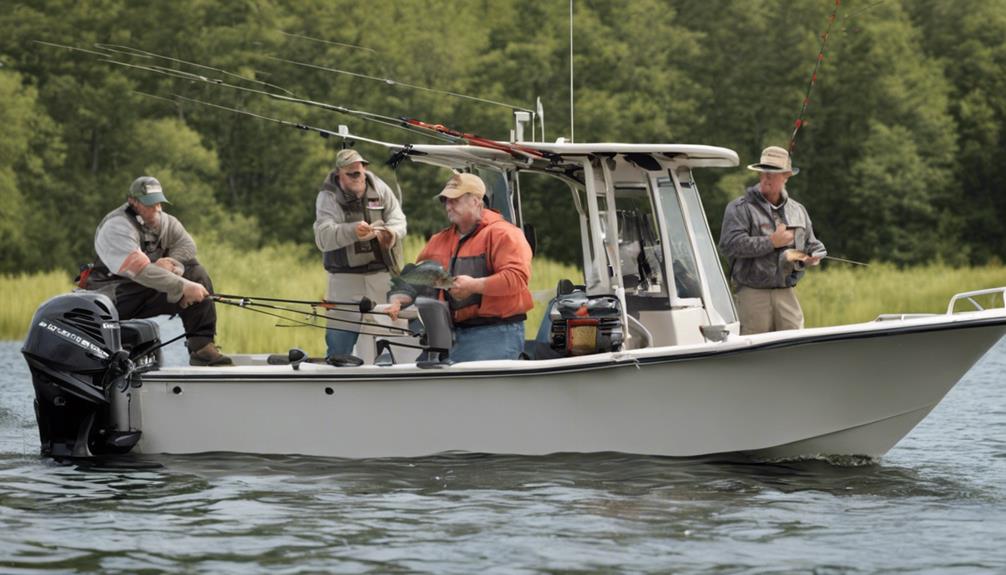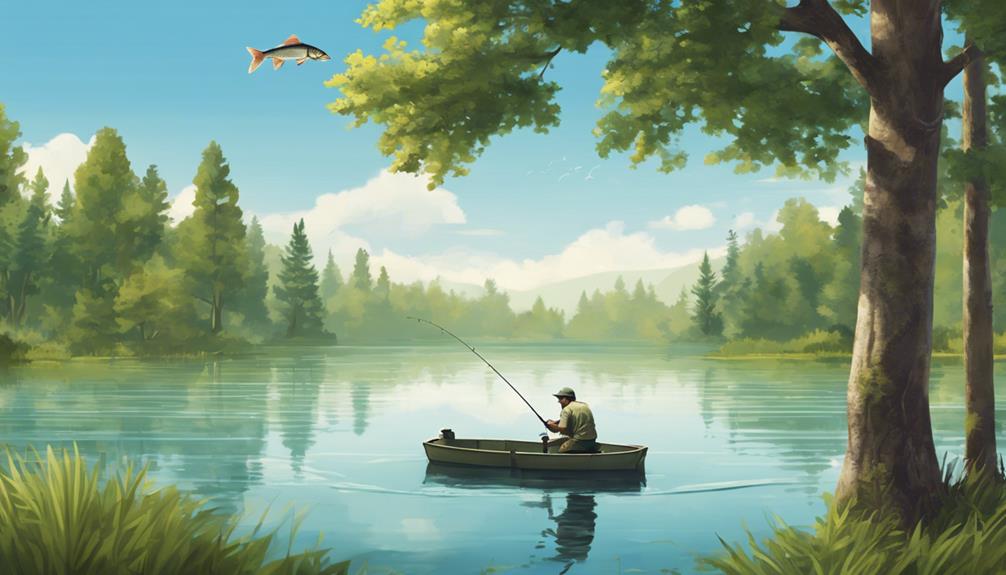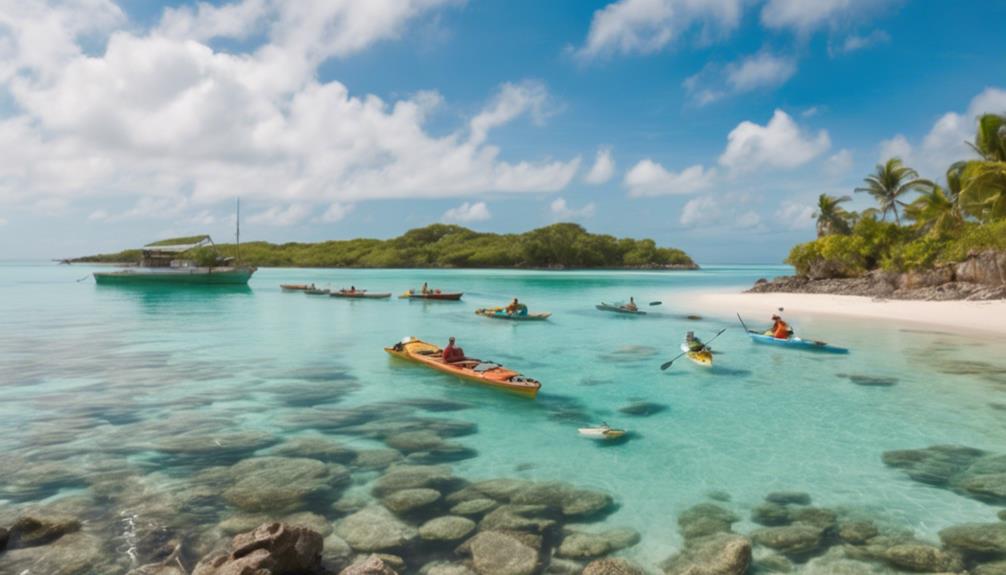In the world of fishing, the practice of catch and release may seem contradictory at first glance. However, have you ever thought about how this seemingly opposing technique actually contributes to the preservation of aquatic ecosystems?
Catch and release holds a key role in conservation efforts, especially when considering factors like sustainable fisheries, species protection, and ethical angling practices.
But how exactly does this method impact the environment and the future of our marine life? Let's explore the multifaceted dimensions of catch and release and its implications for the world beneath the surface.
Benefits of Catch and Release
When practicing catch and release, anglers can contribute significantly to the preservation of fish populations by allowing them to survive and reproduce. Understanding fish behavior is crucial in ensuring the success of catch and release practices. Fish have a remarkable ability to adapt to their environments and exhibit various behaviors that help them survive in the wild. When caught by anglers, fish can experience stress, exhaustion, and injury. By releasing them back into their natural habitat promptly, anglers give these fish a chance to recover and resume their normal activities.
Survival rates play a critical role in the effectiveness of catch and release efforts. Research has shown that when handled properly and released carefully, fish have high survival rates post-release. Factors like hook location, fight time, and air exposure can influence a fish's ability to survive after being caught. By following best practices such as using barbless hooks, minimizing fight time, and keeping the fish in the water as much as possible, anglers can greatly increase the chances of the fish surviving after being released.
Impact on Fish Populations
To understand the impact of catch and release on fish populations, it's crucial to assess how this conservation practice influences the overall abundance and diversity of fish species in a specific ecosystem. Catch and release can significantly affect population dynamics by reducing fishing pressure on certain species. By releasing fish back into their natural habitats instead of harvesting them, it allows for the preservation of populations that might otherwise be overexploited. This helps maintain a balance in the ecosystem and ensures that fish populations can thrive without excessive human interference.
Moreover, catch and release can also play a role in enhancing genetic diversity within fish populations. By allowing more individuals to survive and reproduce, it promotes genetic variation, which is essential for the long-term health and adaptability of fish species. This, in turn, can lead to increased reproduction success and overall resilience to environmental changes.
Conservation of Species
Catch and release practices actively contribute to the conservation of species by promoting sustainable fishing methods and protecting vulnerable populations. By releasing fish back into their natural habitats, these practices help maintain healthy population levels and ensure the long-term viability of various species.
Habitat preservation is crucial for the conservation of species as it provides a safe environment for fish to thrive. When anglers release fish unharmed, they support habitat preservation by allowing fish to continue their role in the ecosystem without disruption.
Furthermore, catch and release play a significant role in population management. By releasing certain fish species, especially those that are overexploited or at risk, anglers aid in maintaining balanced populations. This practice prevents the decline of vulnerable species and helps restore their numbers to sustainable levels. Effective population management through catch and release ensures that fish populations remain diverse and resilient.
Influence on Ecosystem Health
By releasing fish back into their natural habitats through catch and release practices, you help maintain the balance of ecosystems and promote overall ecosystem health. When you engage in catch and release fishing, you contribute to the environmental balance by allowing fish populations to remain stable and diverse. This practice also enhances ecosystem resilience by ensuring that fish populations can adapt to environmental changes and pressures.
Key Points:
- Preserving Biodiversity: By releasing fish, you prevent overfishing and help preserve the biodiversity of aquatic ecosystems.
- Food Chain Stability: Maintaining healthy fish populations through catch and release practices supports the stability of the food chain within ecosystems.
- Natural Selection: Catch and release allows for natural selection to occur, leading to stronger and more resilient fish populations that can better withstand environmental challenges.
Ethical Angling Practices
When practicing catch and release fishing, it's essential to uphold ethical angling practices to ensure the well-being of fish populations and promote sustainable fishing practices. Ethical fishing involves more than just releasing a fish back into the water; it encompasses a range of responsible angling behaviors that help minimize harm to fish and their habitats.
Responsible angling begins with using proper gear and techniques. Using barbless hooks can make hook removal easier and less damaging to the fish. Additionally, ensuring that your equipment is in good condition can help reduce the risk of causing unnecessary harm to the fish during the catch and release process.
Another key aspect of ethical fishing is handling the fish with care. When handling a fish, wet your hands first to avoid damaging its protective mucus layer. Avoid putting unnecessary pressure on the fish's vital organs and refrain from squeezing it tightly. Quick and gentle handling can greatly increase the fish's chances of survival after being released.
Furthermore, practicing responsible angling includes minimizing the time a fish spends out of the water. Limiting air exposure can help reduce stress on the fish and improve its chances of survival post-release. By following these ethical angling practices, you can contribute to the conservation of fish populations and ensure the sustainability of fishing for future generations.
Role in Sustainable Fisheries
Playing a crucial role in maintaining healthy fish populations, responsible catch and release practices contribute significantly to sustainable fisheries. By releasing fish back into their natural habitats, anglers help ensure the ecological balance of marine and freshwater ecosystems, supporting the overall health of these environments.
Key Points:
- Preservation of Ecological Balance: Through catch and release, you actively participate in preserving the delicate ecological balance within aquatic systems. By allowing fish to grow and reproduce, you assist in maintaining biodiversity and the natural food chain dynamics.
- Supporting Fishery Management: Your commitment to catch and release aids in effective fishery management. By releasing fish unharmed, you contribute to the conservation of fish stocks and help prevent overfishing, ultimately supporting sustainable fisheries for future generations.
- Promoting Sustainable Practices: Embracing catch and release as part of your angling ethics promotes sustainable fishing practices. By releasing fish responsibly, you not only protect the fish populations but also ensure the long-term viability of recreational and commercial fishing industries.
Engaging in responsible catch and release practices isn't only a way to enjoy the sport of fishing but also a vital contribution to the preservation of marine and freshwater ecosystems. Your actions today can have a lasting impact on the health and sustainability of fisheries for generations to come.
Science Behind Catch and Release
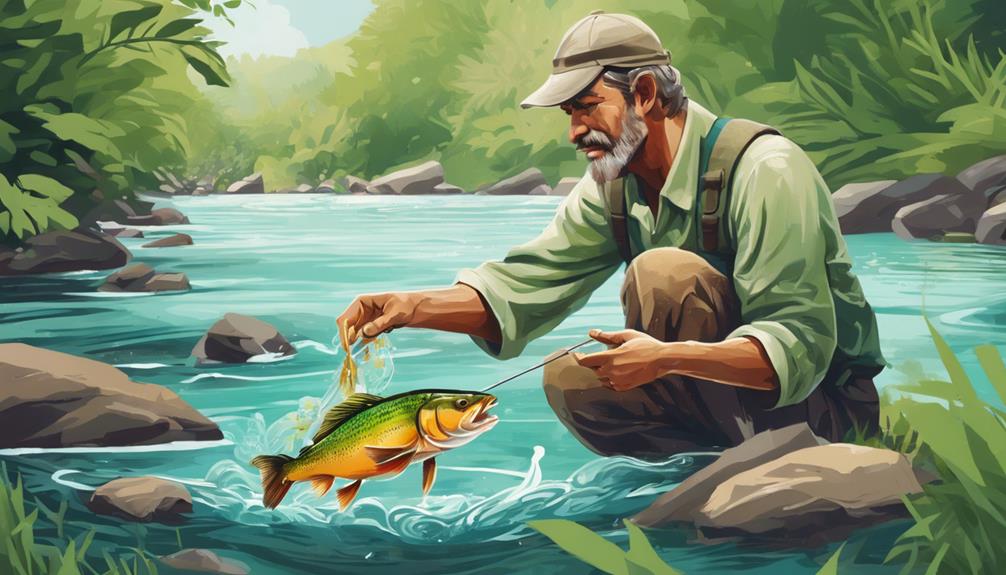
Exploring the rationale behind catch and release adds depth to understanding its impact on fish populations and ecosystems. When a fish is caught and then released back into the water, its behavior can be significantly affected. Fish exhibit stress responses when they're caught, which can have both short-term and long-term consequences. The stress of being caught can lead to exhaustion and injury, impacting the fish's ability to forage for food and evade predators effectively.
Fish behavior is a critical component to consider in catch and release practices. Different species of fish may react differently to being caught, with some experiencing more stress than others. Understanding how fish respond to being caught can help anglers modify their techniques to minimize harm to the fish. For example, using barbless hooks or reducing fight time can decrease the stress experienced by the fish during the catch and release process.
Moreover, the stress response triggered in fish by being caught can have ecological implications. Stressed fish may have reduced reproductive success, altered feeding behaviors, or increased susceptibility to diseases. By considering the science behind catch and release, conservationists and anglers can work together to ensure that fish populations remain healthy and sustainable for the future.
Community Engagement and Education
Considering the impact of catch and release on fish populations and ecosystems, engaging with the community and educating them about sustainable fishing practices is essential for promoting conservation efforts. Community engagement plays a significant role in ensuring the long-term success of conservation initiatives related to catch and release practices. By involving the community and providing them with the necessary knowledge and skills, we can work together towards preserving our aquatic ecosystems for future generations.
- Outreach Programs: Organizing outreach programs can help spread awareness about the importance of catch and release in maintaining healthy fish populations. These programs can reach a wide audience and encourage more individuals to adopt sustainable fishing practices.
- Interactive Workshops: Hosting interactive workshops can provide hands-on learning experiences for community members. These workshops can cover topics such as proper catch and release techniques, fish handling best practices, and the benefits of conservation efforts.
- School Partnerships, Youth Involvement: Collaborating with schools to incorporate conservation education into their curriculum can effectively reach younger audiences. Engaging youth in conservation activities not only instills a sense of environmental responsibility early on but also helps create a ripple effect as they share their knowledge with family and friends.
Frequently Asked Questions
How Can Catch and Release Fishing Be Implemented Effectively in Different Types of Ecosystems?
When it comes to implementing catch and release fishing effectively in various ecosystems, consider ecosystem diversity and use tailored implementation strategies. This approach can maximize conservation benefits by preserving biodiversity.
What Are Some Best Practices for Reducing Mortality Rates in Catch and Release Fishing?
To reduce mortality rates in catch and release fishing, focus on reducing stress on the fish. Use proper handling techniques to minimize harm. Avoid causing exhaustion by reeling in fish too aggressively.
Keep the fish in the water as much as possible and handle them gently. Utilize tools like barbless hooks to make releasing easier. By following these practices, you can increase the chances of fish survival after being caught and released.
Are There Any Specific Regulations or Guidelines for Catch and Release Fishing in Different Regions?
When it comes to catch and release fishing, regulations vary by region, affecting their effectiveness. Understanding regional guidelines is crucial for conservation efforts.
Checking local rules helps protect fish populations. Following specific regulations ensures sustainable fishing practices. Be mindful of the guidelines in your area to support conservation through catch and release.
How Do Environmental Factors, Such as Water Temperature and Habitat Quality, Impact the Success of Catch and Release Programs?
In catch and release programs, environmental factors like water quality and temperature are crucial. Water temperature affects fish behavior and stress levels, impacting their survival post-release.
Habitat diversity and health play a vital role too. Healthy habitats provide suitable conditions for fish recovery after being caught. Proper habitat management ensures sustainable fish populations.
What Ongoing Research Is Being Conducted to Improve the Effectiveness of Catch and Release Practices in Conservation Efforts?
To enhance catch and release practices, ongoing research delves into fish behavior and hook design. Understanding how fish react after release aids in improving survival rates.
Moreover, developing barbless hooks reduces injury and stress on fish during the release process.
Conclusion
In conclusion, catch and release plays a crucial role in conservation by promoting sustainable fishing practices, protecting fish populations, and maintaining ecosystem health.
By practicing catch and release, anglers can contribute to the conservation of species and ensure the future of our fisheries.
It's important to continue educating others about the benefits of catch and release to create a positive impact on the environment and preserve our natural resources for generations to come.
